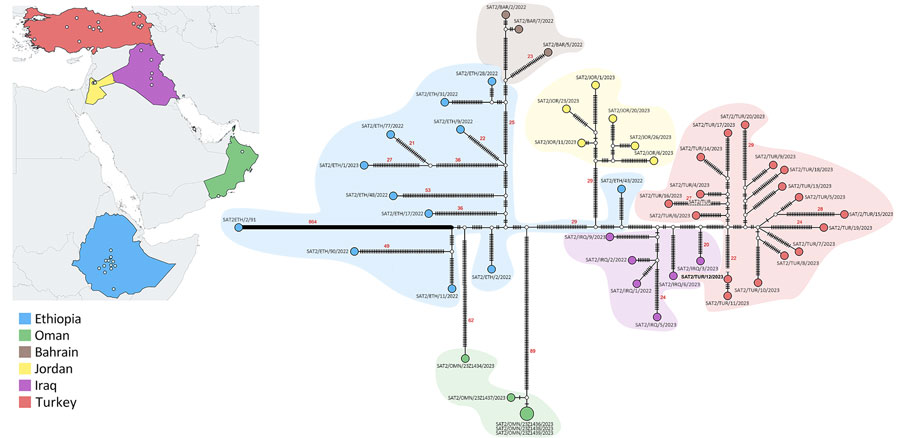Volume 31, Number 2—February 2025
Dispatch
Eastern Africa Origin of SAT2 Topotype XIV Foot-and-Mouth Disease Virus Outbreaks, Western Asia, 2023
Figure 2

Figure 2. Statistical parsimony network and geographic distribution of type SAT2 topotype XIV foot-and-mouth disease viruses in study of eastern Africa origin of SAT2 topotype XIV foot-and-mouth disease virus outbreaks, western Asia, 2023. Nodes are colored according to the country of isolation; white nodes represent missing unsampled haplotypes. Hatch marks represent single nucleotide substitutions estimated between the connected nodes. Differences in nucleotide substitutions of >20 are reported in red numbers. BAR, Bahrain; ETH, Ethiopia; IRQ, Iraq; JOR, Jordan; OMN, Oman; TUR, Turkey.
Page created: December 10, 2024
Page updated: January 31, 2025
Page reviewed: January 31, 2025
The conclusions, findings, and opinions expressed by authors contributing to this journal do not necessarily reflect the official position of the U.S. Department of Health and Human Services, the Public Health Service, the Centers for Disease Control and Prevention, or the authors' affiliated institutions. Use of trade names is for identification only and does not imply endorsement by any of the groups named above.